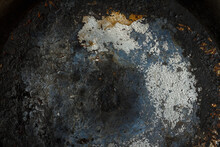How Long Does It Take For Brake Cleaner To Evaporate
Brake cleaner is a commonly used product in automotive maintenance and repair. It is designed to remove dirt, grease, and other contaminants from brake components, ensuring optimal performance and safety. However, one question that often arises is how long it takes for brake cleaner to evaporate. In this article, we will explore the factors that influence the evaporation time of brake cleaner and provide valuable insights for users.
Understanding Brake Cleaner
Before delving into the evaporation time, it is important to understand what brake cleaner is and how it works. Brake cleaner is a solvent-based product that typically contains chemicals such as acetone, toluene, or methyl ethyl ketone (MEK). These solvents have excellent degreasing properties and can effectively dissolve and remove brake dust, oil, and other contaminants from brake components.
When brake cleaner is sprayed onto the surface, the solvents quickly penetrate and dissolve the contaminants. The cleaning action is usually followed by evaporation, where the solvents transition from a liquid to a gaseous state, leaving behind a clean and dry surface.
Factors Affecting Evaporation Time
The evaporation time of brake cleaner can vary depending on several factors. Understanding these factors can help users determine how long they need to wait before proceeding with their brake maintenance or repair tasks.
1. Composition of Brake Cleaner
The specific solvents used in the formulation of brake cleaner can significantly impact the evaporation time. Solvents with lower boiling points, such as acetone, tend to evaporate more quickly compared to those with higher boiling points, such as toluene or MEK. Therefore, brake cleaners containing acetone may evaporate faster than those with other solvents.
2. Environmental Conditions
The surrounding temperature and humidity play a crucial role in the evaporation process. Higher temperatures and lower humidity levels generally promote faster evaporation, while lower temperatures and higher humidity levels can slow down the evaporation time. For example, in a hot and dry climate, brake cleaner may evaporate within minutes, whereas in a cold and humid environment, it may take longer.
3. Application Method
The way brake cleaner is applied can also affect the evaporation time. Spraying brake cleaner directly onto the surface allows for better coverage and faster evaporation compared to using a cloth or brush to apply the cleaner. The spraying action helps distribute the solvents evenly and promotes quicker evaporation.
Case Study: Evaporation Time of Brake Cleaner
To provide a practical understanding of the evaporation time of brake cleaner, let’s consider a case study conducted by an automotive maintenance expert. The expert tested the evaporation time of a popular brake cleaner brand under controlled conditions.
The brake cleaner was sprayed onto a metal surface at room temperature (approximately 25°C) and average humidity levels. The results showed that the brake cleaner evaporated within 2-3 minutes, leaving behind a clean and dry surface ready for further brake maintenance or repair.
However, it is important to note that this case study represents a specific brand and environmental conditions. The evaporation time may vary for different brands and under different circumstances.
Frequently Asked Questions (FAQ)
1. Can I speed up the evaporation time of brake cleaner?
Yes, you can speed up the evaporation time of brake cleaner by ensuring proper ventilation in the area. Increasing airflow, such as using fans or opening windows, can help dissipate the solvents more quickly.
2. Is it safe to use brake cleaner on all brake components?
Brake cleaner is generally safe to use on most brake components, including calipers, rotors, and pads. However, it is important to avoid spraying brake cleaner directly on rubber or plastic parts, as it may cause damage. Always refer to the manufacturer’s instructions and exercise caution when using brake cleaner.
3. Can brake cleaner leave residue behind?
Brake cleaner is designed to evaporate completely, leaving no residue behind. However, if the surface is heavily contaminated or the brake cleaner is not allowed sufficient time to evaporate, some residue may remain. It is recommended to ensure proper evaporation before proceeding with brake maintenance or repair.
4. Can I use brake cleaner as a substitute for other cleaning products?
While brake cleaner is effective at removing grease and contaminants from brake components, it is not recommended as a substitute for general-purpose cleaning products. Brake cleaner contains strong solvents that may damage certain surfaces or materials. It is best to use brake cleaner specifically for brake maintenance and use appropriate cleaning products for other applications.
5. Can brake cleaner be harmful to health?
Brake cleaner contains chemicals that can be harmful if inhaled or ingested. It is important to use brake cleaner in a well-ventilated area and avoid direct contact with the skin or eyes. If any adverse reactions occur, seek medical attention immediately.
6. Are there any eco-friendly alternatives to brake cleaner?
Yes, there are eco-friendly alternatives to traditional solvent-based brake cleaners. These alternatives are formulated using biodegradable and non-toxic ingredients, making them safer for the environment and human health. Look for eco-friendly brake cleaners that are labeled as such.
Summary
Brake cleaner is a valuable product for maintaining and repairing brake components. The evaporation time of brake cleaner can vary depending on factors such as the composition of the cleaner, environmental conditions, and application method. Understanding these factors can help users determine how long they need to wait before proceeding with their brake maintenance or repair tasks.
By following the manufacturer’s instructions, ensuring proper ventilation, and allowing sufficient evaporation time, users can effectively use brake cleaner to achieve clean and safe brake components. Remember to exercise caution, avoid direct contact with certain materials, and prioritize safety when using brake cleaner.





